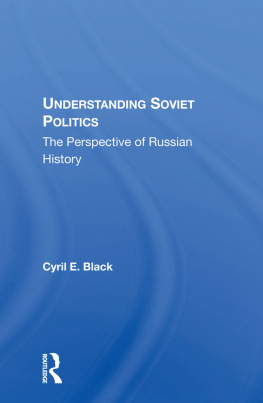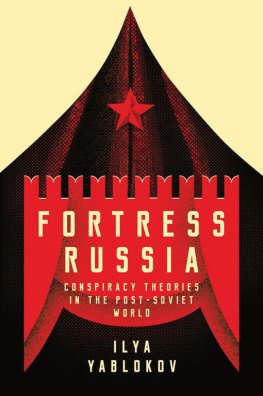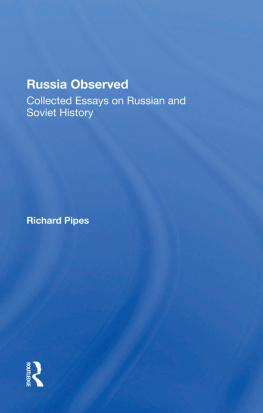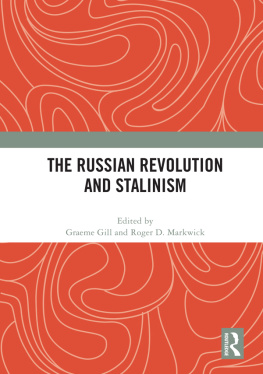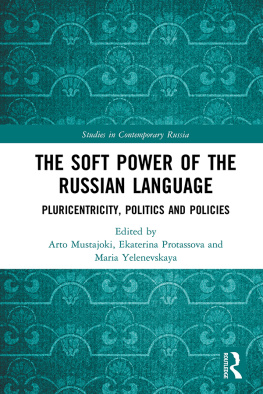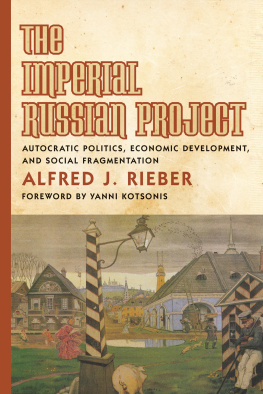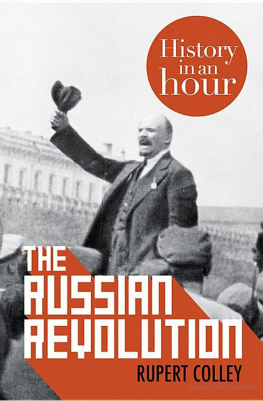UNDERSTANDING SOVIET POLITICS
About the Book and Author
To what extent did the Russian revolution of 1917 bring about the changes wanted by the Bolsheviks? Why did many of these changes fail to materialize? How has the Russian heritage adapted to the challenges facing all modernizing societies? What does Russia's past tell us about the present role of the USSR in world affairs?
In this collection of essays, which includes new part and chapter introductions, Dr. Black discusses these questions, examining the major issues that shape our understanding of Soviet politics. Beginning with a general exploration of the ways the traditional heritage of the Russian empire has both helped and hindered the adaptation of Soviet society to the contemporary world, he illustrates the extent to which the Russian empire was already evolving into a modern society before World War I. The author analyzes the modernization of the USSR, emphasizing the interaction of tradition and modernity and the ways the Russian heritage of institutions and values has been adapted since 1861 to the needs of political development, economic growth, and social integration. Comparisons are made with a wide range of societies, first in 1967the fiftieth anniversary of the Russian revolutionand again in the 1980s.
The book considers the past and present relations of Russia/USSR with the outside world in the context of universal societal changes. Dr. Black discusses such questions as the differences between the foreign policy objectives of Czarist Russia and the Soviet Union; the degree to which Russia/USSR has been able to influence other countries through means other than military power; and, drawing on his experience in Bulgaria, the origins of the cold war. The book concludes with Dr. Black's personal interview with Nikita Khrushchev, a discussion that provides rare insights into the thought processes of a leading Soviet statesman at the height of his power.
Since the 1940s, Cyril E. Black has figured prominently in the study of Russian history and politics. At Princeton University, he inaugurated the study of Russian history and played a leading role in the development of regional studies. From 1968 to 1985 he was director of the Center of International Studies at Princeton, where he is currently James S. McDonnell Distinguished University Professor of History and International Affairs.
Written under the auspices of the Center of International Studies, Princeton University
A list of other Center publications appears at the back of this book
UNDERSTANDING SOVIET POLITICS
The Perspective of Russian History
Cyril E. Black
First published 1986 by Westview Press, Inc.
Published 2019 by Routledge
52 Vanderbilt Avenue, New York, NY 10017
2 Park Square, Milton Park, Abingdon, Oxon OX14 4RN
Routledge is an imprint of the Taylor & Francis Group, an informa business
Copyright 1986 Taylor & Francis
All rights reserved. No part of this book may be reprinted or reproduced or utilised in any form or by any electronic, mechanical, or other means, now known or hereafter invented, including photocopying and recording, or in any information storage or retrieval system, without permission in writing from the publishers.
Notice:
Product or corporate names may be trademarks or registered trademarks, and are used only for identification and explanation without intent to infringe.
Library of Congress Cataloging-in-Publication Data
Black, Cyril Edwin, 1915
Understanding Soviet politics.
A collection of previously published essays.
Includes index.
1. Soviet UnionPolitics and government. 2.Soviet UnionHistory. 3. Soviet UnionSocial conditions. 4. Soviet UnionEconomic conditions. I. Title.
DK43.B52 1986 947 86-15783
ISBN 13:978-0-813-30402-1 (hbk)
To Corinne this book is affectionately dedicated
Contents
- Part One
Russian History: A Window on Soviet Politics - Part Two
Modernization: How Russia/USSR Differs from Other Countries - Part Three
Russia/USSR: How It Relates to the Larger World
When Fred Praeger invited me to prepare these essays for publication, I decided to organize them into three sections. The first section deals with the continuities and discontinuities between the Russian Empire and the Union of Soviet Socialist Republicsone of the main focuses of the book. This distinction led me to adopt the somewhat awkward but nevertheless useful term Russia/USSR to indicate the continuities between the two regimes.
The second group of essays centers on modernization, an interest of mine since the 1950s. Modernization studies as they relate to Russia/ USSR are concerned with the ways that the Russian heritage of institutions and values has been adaptedboth before 1917 and since thento the functions of political development, economic growth, and social integration that are common to all modernizing societies. This type of analysis involves comparisons both between the Soviet Union and Russia and between Russia/USSR and other countries.
The last group of essays examines the question of how the relations between Russia/USSR and other countries have been affected by the changes involved in modernization. To what extent is the contemporary role of the Soviet Union in world affairs unique in the country's history? To what extent does this role continue themes that have deep roots in Russia's past? How has Russia/USSR influenced the institutions and values of other countries, and how has this influence fluctuated over time?
While all twelve essays have been reprinted in their original form, a few titles have been changed to emphasize the major themes of the book.
I would like to express my appreciation to my wife, Corinne, for her thoughtful suggestions on organization and style. Her experience in editing and university teaching proved invaluable in these matters.
Cyril E. Black
Princeton, N.J.
PART ONE
Russian History: A Window on Soviet Politics
The four essays in this section deal with Russian history as it illuminates our understanding of current Soviet politics. Russian history, analyzed and interpreted by Western historians, gives us valuable and sometimes surprising insights into the limits the Russian heritage placed on any reform movement. It also helps to explain why the revolution of 1917 failed to produce the sweeping changes that its rhetoric espoused.
In 1917 Lenin and his colleagues led a revolution that, at the level of its legislative program and rhetoric, was the most radical the world had known. It sought nothing less than the abolition of all the inequities that had characterized imperial Russiaand most other countries and the establishment of a society based on equality and justice for all. Yet some seventy years later, despite changes in institutions and values no less dynamic than those that have occurred in other advanced societies, much of the old Russia is still in evidence, especially in the political sphere. Despite a very significant development of political participation through institutions and organizations, the centralized and autocratic government of the 1980s bears much more than a passing resemblance to the institutions of imperial Russia. This and other elements of continuity raise the question of whether revolution is possible. Can a society be transformed overnight? Can a revolution accomplish any more than bringing to power a new group of leaders who can set a society moving in a new direction but who must work within the constraints of the old system?

